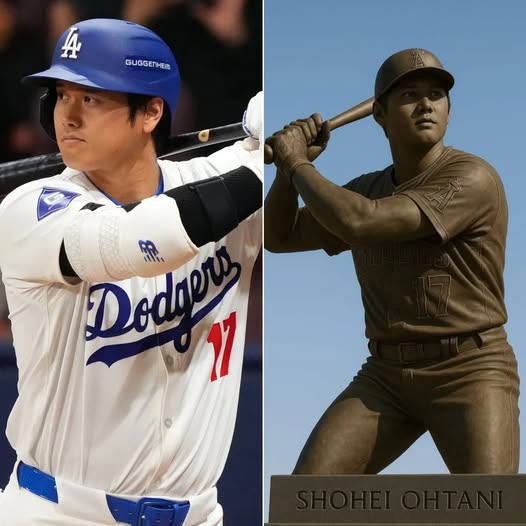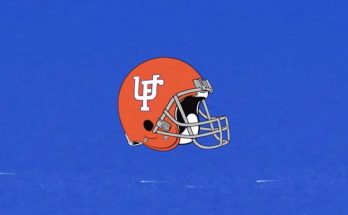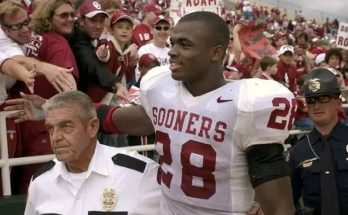Los Angeles is a city built on legends—icons whose names echo far beyond the diamond: Robinson, Koufax, Drysdale. This summer, a new chapter begins in that storied history, as the Dodgers embark on installing a statue of Shohei Ohtani at Dodger Stadium. It will be the first time a player of Asian descent and the first modern two‑way star is immortalized in sculpted bronze. With this dedication, the Dodgers are signaling that Ohtani’s impact transcends stats—he has reshaped the identity of the franchise, energized its fanbase, and etched a global legacy that demands celebration.
When Ohtani stunned the baseball world by signing a 10‑year, $700 million deal with the Dodgers in December 2023, it wasn’t just the richest contract in professional sports history—it represented a dramatic shift for the franchise. Dodgers president Stan Kasten noted at the statue’s announcement, “This isn’t just a statue. It’s a symbol of what’s possible when someone refuses to be defined by limits,” highlighting how Ohtani’s signature expanded expectations for baseball players into entirely new dimensions . He joins legends Jackie Robinson, Sandy Koufax, and Don Drysdale in the Ring of Legends Plaza, but as the first Asian player honored with a statue and the first two‑way player represented in bronze, Ohtani’s presence carries unique historical weight.
The sculpture is the work of acclaimed artist Branly Cadet, noted for immortalizing figures like Hank Aaron and Satchel Paige. Cadet collaborated closely with Ohtani’s camp to capture both aspects of his game: the explosive torque of a fastball and the serene force of the swing. “We wanted to capture Shohei in motion—the dynamic tension of pitching, the quiet focus of hitting,” Cadet explained . The decision to frame Ohtani mid‑cottonwood, poised between roles, is deliberate: a visual tribute to the duality that defines him.
This is more than a local spotlight—it is a cultural moment. Back in March, a 15‑story mural by Robert Vargas appeared on the side of Los Angeles’s Miyako Hotel in Little Tokyo, showing Ohtani both pitching and swinging. It quickly became a pilgrimage site for fans from across Southern California and Japan. Vargas dubbed it “L.A. Rising,” declaring, “We’re team LA…and the whole country of Japan rooting for Shohei.” It speaks to Ohtani’s unique ability to connect across national lines—he is equally beloved in Los Angeles and Oshu City, his hometown in Japan, where public celebrations now take place in Dodgers blue every 17th of the month .
Economically, Ohtani’s arrival has been transformative. Japanese tourism to Los Angeles surged: 2023 saw a 91.7 % increase over the previous year, and travel agencies regularly fill 200‑client buses to attend Dodgers home games . In Little Tokyo, businesses have experienced 30–40 % spikes in foot traffic on game days. “Ohtani‑mania” cocktails, mochi, ramen specials, sake shots—all trace back to the player’s influence. Amid concerns of displacement and rising rents, community leaders see the phenomenon as a chance to reinforce heritage‑led growth rather than siphoned development.
On the field, the numbers continue to dazzle. In 2024, despite being limited to designated hitter while recovering from season‑ending elbow surgery, Ohtani became the first player in MLB history to record 50 home runs and 50 stolen bases in a season—and also earned unanimous NL MVP honors after leading the Dodgers to a World Series championship in his debut postseason . His individual brilliance felt like a shot of adrenaline to a franchise accustomed to excellence—and a timely catalyst for global attention.
The bobblehead giveaway featuring Ohtani and his Kooikerhondje, Decoy, generated lines more than seven hours long . As Oct. 29, 2024, neared—a date forever associated with his stunning impact on the World Series—the Little Tokyo murals brought Japanese tourists and rising local interest closer to Dodger fandom, sparking a wave of cross‑cultural unity .
The statue’s placement at Dodger Stadium, affectionately called Chavez Ravine, is deeply symbolic. Since opening in 1962, the ballpark has played host to nearly every Dodgers milestone—from Koufax’s no‑hit gems to the glory of the 1988 and 2020 World Series runs. Situated among iconic figures immortalized in bronze, Ohtani’s likeness will greet fans entering the ballpark, channeling more than homage—it is an invitation to recognize a living legend who is still defining his place in baseball history.
It arrives at a moment when baseball, and sports in general, are reckoning with shifts in global narratives. Ohtani’s presence epitomizes the transnational future of MLB—a Japanese protégé rising through domestic and international leagues, achieving MVP records in both leagues, and bridging fan bases across continents . Statues, murals, bobbleheads—these are markers of reverence for a player whose career reminds us that excellence is boundless.
Fans on Reddit noted that Ohtani’s influence extends beyond numbers. In June 2024, a Dodgers batboy, Javier Herrera, was celebrated for instinctively saving Ohtani from a sharp foul ball—prompting Ohtani himself to call him “my hero” . Such moments convey a quiet recipience, a keen humility in the star—reinforcing why the statue must show the player in living form: alert, athletic, engaged in the moment.
At the unveiling ceremony, one can imagine tears in the eyes of team officials, fans, and community leaders alike. Some in the Japanese diaspora will see in the statue a reflection of opportunity—proof that someone from their communities can reach the highest platforms. Others will feel an emotional tug: Los Angeles is more than a town of celebrities—it is a mosaic of global cultures, all drawn into shared moments of awe and pride.
Ohtani has embraced his role as a global ambassador. He’s launched baseball academies in Los Angeles and Sendai, creating pipelines for future two‑way hopefuls. His quiet behind‑the‑scenes philanthropy is emblematic of a player who, despite public adoration, keeps breaking expectations—on and off the field . The statue pays tribute not only to his feats but to his ethos: extending himself beyond one dimension, inspiring others to do the same.
As Dodger Stadium continues to fill with “Dodger blue and Decoy white,” the statue offers a centerpiece—not for nostalgia—but for possibility. It says: this was his last season as a Dodger? No. He’s still here. He’s still swinging, still pitching on rare return, still challenging the boundaries of what a player can be. What’s on bronze is a moment; what’s in his life is a narrative still being written.
In time, kids will circle the statue, mimicking his windup or wide stance, tracing an autograph etched in metal. Parents will tell them: that’s Shohei Ohtani, the man who revived baseball’s romance with Amaerica and Japan alike. They’ll say: that’s the legend who refused to be just a pitcher or just a hitter—he became both. And he shone.
Los Angeles is, once again, giving a hero a home. And for Shohei Ohtani, Dodger Stadium is not just a workplace—it’s where global hearts found belonging, and where a young man from Japan discovered a city ready to etch his name in bronze. When the statue rises, it will not only honor what Ohtani has accomplished—but what he continues to offer: a vision of the extraordinary. A star plated in blue, rising forever in Elysian Park.



